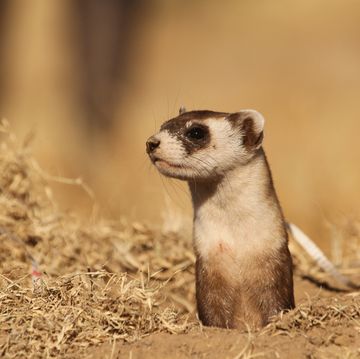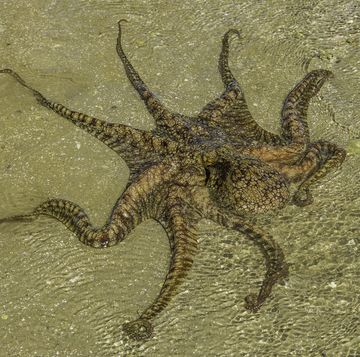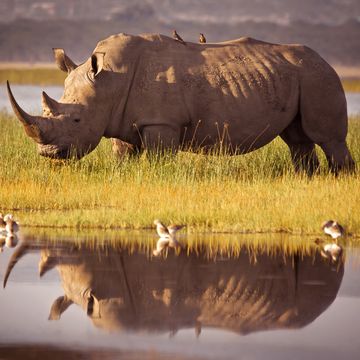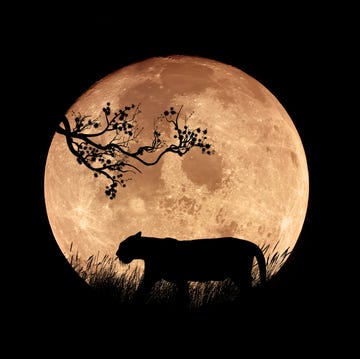- A lost species of chameleon has reemerged in Madagascar.
- Voeltzkow’s chameleon has been missing for more than 100 years. Now, for the first time since 1913, scientists have spotted the mysterious creatures in their natural habitat once again.
- For the first time, the researchers have also observed females of the species.
In 1913, Voeltzkow’s chameleon (Furcifer voeltzkowi) disappeared from the wild, never to be seen in its native Madagascar again. But now, more than a century after scientists thought they had long lost the elusive creature to time, they've surprisingly rediscovered it once more.
🦎You love badass animals. So do we. Let's nerd out over them together.
The reptile's reemergence is the result of a push from the Global Wildlife Conservation, whose Search for Lost Species program seeks to find species that scientists haven't spotted for at least a decade, according to Live Science.
Researchers began combing Madagascar for the chameleon in March 2018, but they came up empty until the expedition was nearly over. With just days left in the journey, a professional guide spotted one of the chameleons—and then the floodgates opened.
The researchers ultimately rediscovered three males and 15 females in trees and on the grounds of a hotel in the town of Katsepy, all roosting in the evening. The males showed bite marks and smaller injuries that indicated "interspecific fighting and subjective signs of aging, suggesting that they were approaching the end of their life," the scientists write in Salamandra, the German Journal of Herpetology.
The researchers didn't actually expect to find female Voeltzkow’s chameleons; before they spotted them, no one had ever seen one in the flesh. The females differ from the males in that they “display a pattern of red dots and a streak of purple against a background of black and white” when stressed, while males turn varying shades of green, Live Science says.
Because Voeltzkow’s chameleons are endemic to a very small area in Madagascar, researchers suggest the creatures may qualify as endangered, as their populations are fragmented and their natural habitat is in continued decline.
So how has an entire species managed to fly under the radar for so long? Scientists suspect the chameleons may only live for several months after hatching. “The assumed short life might also partly explain why this splendid species got ‘lost’ for many decades, since most roads in its habitat are not accessible in the wet season,” the researchers say.
Because there's still so much we don't know about Voeltzkow’s chameleons, the researchers who rediscovered the reptiles are hoping to keep studying them in order to “clarify the conservation status” of the species.














